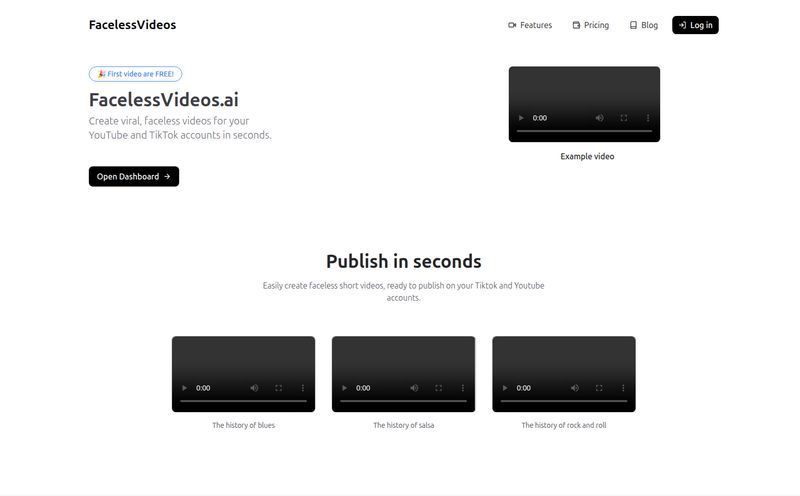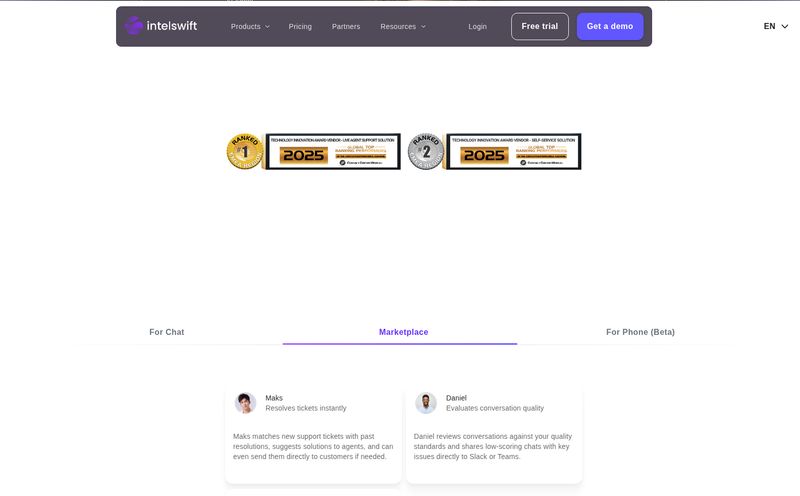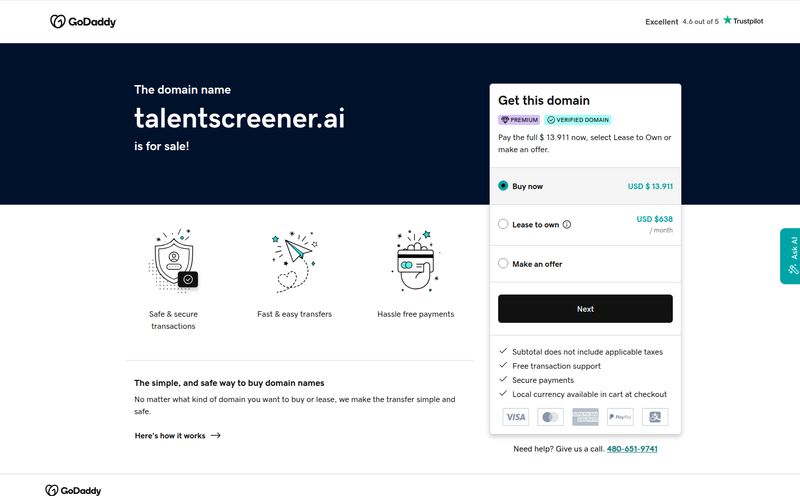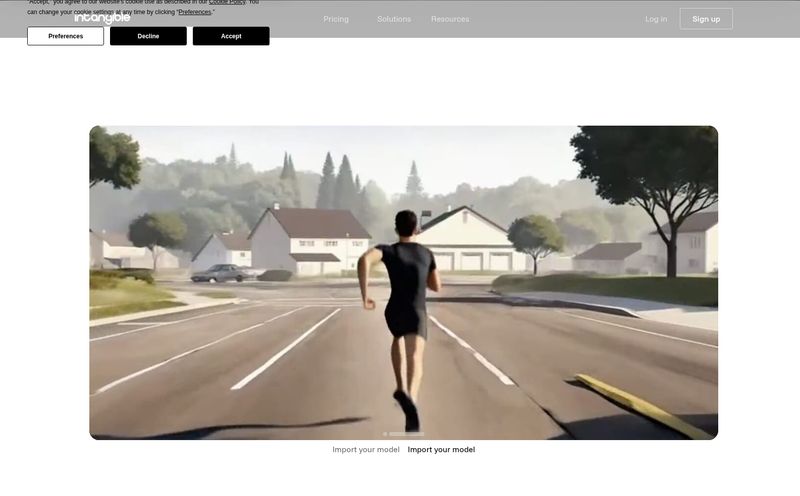I’ve been in the digital marketing and SEO game for a long time. Long enough to remember when “procedural generation” was the hot new thing that was going to change game development forever. It did, to an extent, but it wasn't the magic bullet everyone promised. So whenever a new tool pops up claiming to “revolutionize” a creative process, my inner skeptic raises an eyebrow. You know the feeling.
But then I stumbled upon Text2Motion. And I have to admit, this one feels… different. The claim is simple and audacious: create 3D skeletal animations just by typing out what you want. No more mind-numbing keyframing for hours just to get a basic walk cycle. Just type “a character walks forward cautiously, looking over their shoulder” and… boom. Animation.
Is it too good to be true? Let's get into it.
So, What Exactly is Text2Motion?
At its heart, Text2Motion is a generative AI platform. But hold on, before you roll your eyes and lump it in with the hundreds of GPT-wrappers flooding the market, they're quick to point out this is a bespoke, custom-built AI model. This isn't just a clever interface that passes your text to a generic large language model. It's been specifically trained on the incredibly complex art of 3D skeletal animation.
Think of it this way. A generic AI might be a jack-of-all-trades, able to write a poem or a bit of code. Text2Motion is a master craftsman who has spent years studying only the movement of the human (and non-human) form. It understands weight, momentum, and intention in a way a generalist model simply can't. It’s not generating a flat video file; it’s generating the actual skeletal data—the digital bones and joints—that animators use in their software. That’s a critical distinction.
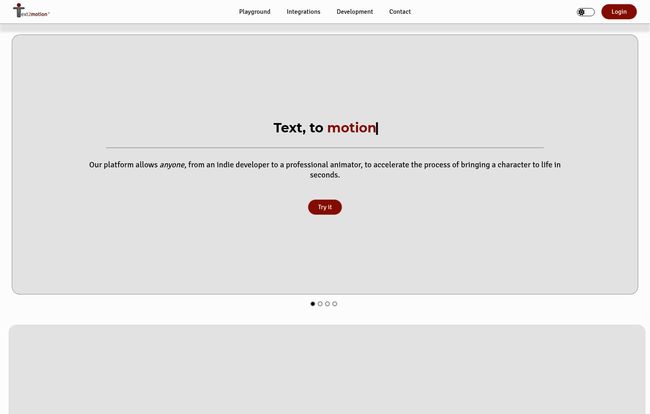
Visit Text2Motion
How It Works in the Wild
The core experience seems to revolve around their “Playground.” It’s a space where you can just... play. You type in a descriptive prompt and the AI gets to work, churning out a preview of the animation in what they claim is just a few seconds. For anyone who has spent an entire afternoon just rigging a character’s fingers, the idea of getting a full-body motion in seconds is honestly mind-blowing.
This is where the potential really starts to shine. Imagine you're an indie developer. You need a bunch of animations for your new RPG: idle stances, attack swings, death slumps, victory dances. That used to mean either spending a huge chunk of your budget on an animator or buying a pre-made asset pack that never quite fits your character's vibe. With a tool like this, you could generate dozens of variations in an afternoon, getting you 80% of the way there and freeing you up to focus on polishing the final product.
The Real Magic: It Actually Plugs Into Your Workflow
A cool tool is one thing. A cool tool that actually fits into my established workflow? That’s another thing entirely. This is where Text2Motion got my full attention. They aren't trying to create a walled garden. They’re building bridges.
Right now, they have integrations for Blender and Unity marked as “New,” which is fantastic news for a huge slice of the creator community. Even more promising are the “Coming Soon” badges on Unreal Engine and Godot. They're clearly thinking about the entire ecosystem, from hobbyists to AAA studios. For the more technically inclined, they also offer a REST API, meaning you could potentially integrate this animation generation directly into your own custom tools or pipelines. Now that is powerful stuff.
Who Is This Really For?
The platform seems to be casting a wide net, from the solo dev in their bedroom to the professional animator in a bustling studio. And I think that's the right call.
- For Indie Devs & Small Studios: This could be a godsend. It lowers the barrier to entry for creating custom, dynamic animations, saving immense amounts of time and money.
- For Professional Animators: I don't see this as a replacement. Not at all. I see it as an incredible acceleration tool. Use it to quickly block out complex scenes, generate base layers to build upon, or create variations for crowd characters. It’s a way to skip the grunt work and get right to the artistry.
- For VFX and Film: Pre-visualizing scenes just got a whole lot faster. Need to show a director how a character will move in a specific shot? Type it up. Done.
The Good, The Bad, and The Inevitable AI Weirdness
No tool is perfect, especially one on the cutting edge of AI. So lets get real about the pros and cons based on what we know.
What's to Love
The speed is the obvious headline. Going from a simple text idea to a usable 3D animation in seconds is a paradigm shift. The ease of use opens up animation to people who might have been intimidated by the steep learning curve of traditional software. And as I mentioned, the focus on practical integrations with tools like Blender and Unity shows they understand their audience’s needs. It's not just a tech demo; it’s being built as a practical, everyday utility.
Where The Rubber Meets the Road
Let's be realistic. Generative AI is still a developing field. The website itself hints that the AI preview might produce errors. You can't just type-and-forget. Every output will need to be reviewed, tweaked, and polished by a human hand. You might get an animation where a hand clips through a leg or a movement that just feels a little… off. This isn't a silver bullet, it's a very powerful new hammer. You still need a carpenter to know how to swing it properly and to check the final construction. My advice? Go in with an open mind but expect to do some clean-up.
And The Million-Dollar Question... The Price?
Here's the current mystery: there's no pricing page. Nada. This isn't uncommon for a platform in its early stages. They're likely still figuring out their model. Will it be a monthly subscription? A pay-per-animation credit system? A freemium tier for hobbyists? Your guess is as good as mine. Personally, I'm hoping for a model that's accessible to indies, maybe a free tier with limited generations so people can really get a feel for it before committing.
Frequently Asked Questions about Text2Motion
- 1. Is Text2Motion a free tool?
- As of now, pricing information isn't available on their website. They do feature a “Playground” to try the tool, which suggests there might be a free trial or a freemium model in the future. It’s best to check their site directly for the most current information.
- 2. Does this replace the need for 3D animators?
- I really don't think so. It’s better to see it as a powerful assistant. It can handle the initial, often tedious, work of creating a base animation, but it still requires a skilled artist to refine, polish, and ensure the final product meets quality and compliance standards.
- 3. How is this different from AI video generators like Sora or Runway?
- The key difference is the output. Video generators create a flat video file (a sequence of images). Text2Motion creates 3D skeletal animation data (.fbx, .gltf, etc.). This means you can apply it to your own 3D character model in a game engine or animation software and have full control over the camera, lighting, and the animation itself.
- 4. What software and game engines does Text2Motion support?
- Currently, they list new integrations with Blender and Unity. They also show that support for Unreal Engine and Godot is “coming soon.” Plus, a REST API is available for custom developer workflows.
- 5. Can I use the animations in a commercial project?
- That will almost certainly depend on their terms of service once the product is fully launched. Given their target audience of developers and professionals, it’s highly likely they will offer a commercial license.
My Final Thoughts on Text2Motion
I came in skeptical, and I'm walking away genuinely intrigued. Text2Motion isn't just another AI gimmick. It’s a tool that seems to deeply understand a core pain point for a massive creative community. By focusing on skeletal data and direct software integration, they are building something with real, practical utility.
It won't replace human artists—the best tools never do. Instead, it has the potential to become an indispensable part of the modern animation pipeline, a creative partner that handles the boring stuff so artists can focus on what they do best: bringing characters to life. I’ll be keeping a very close eye on this one.
